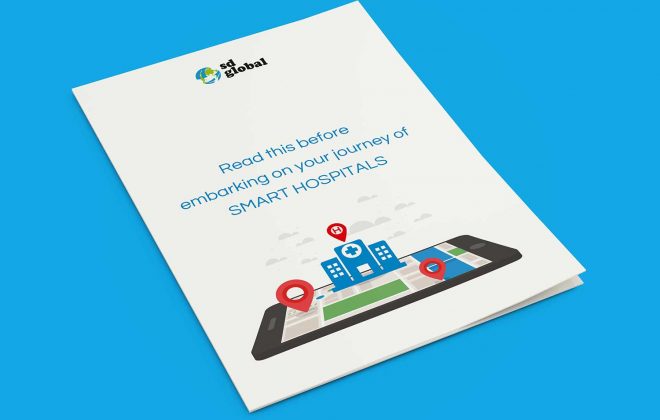Connected Healthcare Ecosystem – Keeping the Patient at the Center of Care
Today’s patients are not the passive recipients of information and treatment. They want to play an active role in their health journey and management. This has given a push to connected healthcare where the patients want to take the lead of their care through real-time collaborations enabled by technology. The healthcare world today is going through a massive transformation where patients and caregivers are getting connected seamlessly through applications, devices, and data – aka Connected Healthcare.
Simply put, Connected Healthcare is the healthcare delivery that leverages technology for seamless access, share, and analysis of data across the healthcare systems. It encourages effortless collaboration and transparent communication among various stakeholders with an aim to make healthcare efficient and affordable and make it more patient-centric.
According to Price Waterhouse Coopers, the connected healthcare market will be worth $61 billion by 2020.
The Need for Connected Healthcare?
Following are some of the drivers which are pushing the need for a connected healthcare ecosystem.
Population Ageing: In Malaysia, the elderly population has increased from 5.5 to 7.9 % during 1997 to 2010. By 2040, it is projected to reach 16.3%! With such a rising aging population, which cannot travel to the hospital for every single issue, the need for different and more advanced home care models and remote monitoring systems is increasing.
Mobile Devices and Wearables: Today’s patients are tracking their health data – right from steps to vital stats – on their mobile devices and wearables. The doctors and caregivers can use this important health information to make more informed decisions about the patients’ health and treatment.
Technology: With the evolution of technology, open standards, data storage on the Cloud for anytime anywhere access, and proliferation of mobile devices, it has become easier to store, manage, and access information in real-time.
What is Driving Connected Healthcare?
The healthcare industry is seeing some very peculiar trends in the recent years. A host of mobile apps and devices are being used by patients at large. These apps and devices are capable of collecting real-time data about the patients’ health and performing an analysis of the same. Actionable notifications are then shared with patients as well as the doctors. This is making the patients more involved and “connected” with their health. The wearables are acting as preventive measures and helping in predicting untoward health conditions. Data collected through such diverse sources is being analyzed by doctors and caregivers to improve their decisions and diagnostic accuracy.
Benefits of Connected Healthcare
Let us take a look at some of the key benefits of connected healthcare
Ease of Data Access: When the patient data is stored at a centralized location, it becomes extremely easy to access the latest information about the patient health anytime, anywhere. Doctors and caregivers don’t need to spend hours in finding the right information and patients don’t need to carry bulky files of their medical records – this, in turn, makes the patient care efficient and effective.
Enhanced Efficiency: The comprehensive and seamless exchange of information between patients, caregivers and providers ensures that the consumer aka patients’ demands are well responded and compliance is also maintained. The clinical interoperability of healthcare helps in reducing the costs and improving efficiency.
Minimize Errors: With connected healthcare, doctors are able to access data from multiple sources such as wearables, sensors, and monitors and run high-end analysis on that data to define the right course of action – almost in real time. Such data-driven decisions help doctors in reducing the errors caused by insufficient or inaccurate information.
Reduced Costs: Through interoperability of devices, improved collaboration and coordination between all the stakeholders, and adoption of EHR, connected healthcare is able to reduce the overall healthcare costs for the patients.
Challenges in Connected Healthcare
Like every technological evolution, connected healthcare is also facing some key challenges and of course, a lot of efforts are being put in to overcome these in near future.
Privacy and Security: Issues about privacy, security, unauthorized data access, cyber attacks, and encryption are raising concerns about the healthcare information which is transmitted electronically. Rules and laws like HIPAA are enforced to ensure data security and avoid data breaches. For providers adopting healthcare technologies, it is important to know such rules and compliances.
Interoperability: In the absence of a single set if standards, the interoperability between various systems and devices such as EHRs, legacy hospital systems, and medical devices remains to be an issue.
Data Load and Complexity: The volume of data generated by various of medical devices, wearables, sensors, EHRs, and hospital systems in the form of images, videos, digital information, paper files, and multimedia files is humongous and too complex to handle and analyze – unless backed by a solid technology.
While connected healthcare is an extremely promising evolution, I feel that to ensure the success of the ecosystem, we need a coherent set of standards for managing the interoperability between various systems. There needs to be data interoperability across various devices and systems. And of course, an improved connectivity across the healthcare ecosystem will facilitate easy flow of data.




